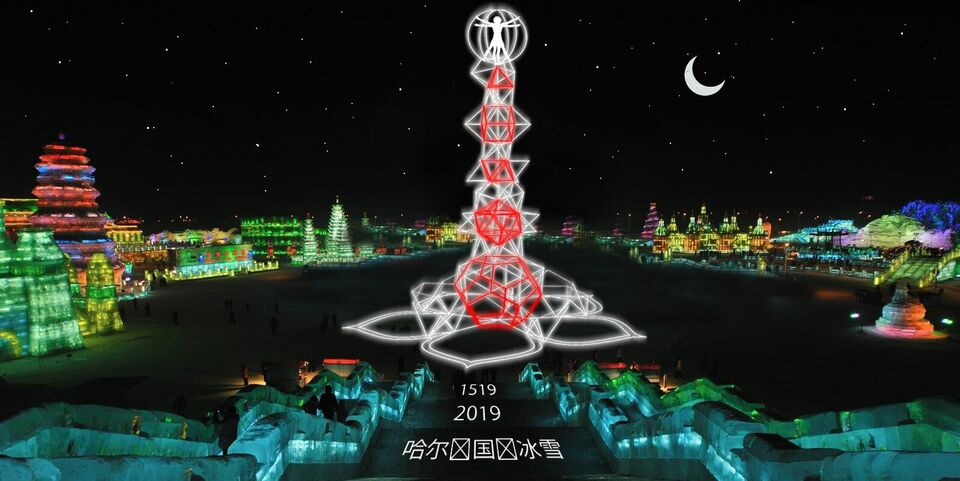“Da Vinci Ice Tower will be a crowd pleaser in Harbin”
Leonardo da Vinci was already on Arno Pronk’s mind in the winter of 2015-2016, when he tried to build an ice bridge after a design of the Italian polymath in Juuka, Finland. In late 2019, the Assistant Professor in the Department of the Built Environment plans to build a 40-meter-tall tower using fiber-reinforced ice in the Chinese city of Harbin, inspired by Da Vinci’s work. Icing on the cake: 2019 will mark the 500th anniversary of the death of that supreme Homo Universalis.
The temperature outside is a mere minus seven degrees Celsius, but Arno Pronk, hidden away in his office on the top floor of the Vertigo building, laughs at it. As the snowflakes whirl down, he talks about Harbin, the North-Chinese city he visited several times last month to supervise his most recent ice project: building a gridshell of 3D printed ice. Harbin, situated at the same altitude as Marseille, endures extreme cold wind directly from Siberia during winter. Temperatures often drop far below zero during the day, and an extra ten degrees at night. Not exactly pleasant working conditions, but for Pronk, these are the perfect circumstances for realizing his projects.
Early 2018, Pronk erected the Flamenco Ice Tower in Harbin, and later that year he and his team of students, in cooperation with the local TU, built a gridshell made of 3D printed ice there. When he tested its strength in early January, he was surprised to find that the construction only collapsed under a weight of over nine thousand kilos. “The construction is made of reinforced ice tubes with a diameter of seven centimeter and is much stronger than expected. I could never have imagined that these relatively thin ice beams would be able to carry so much weight.”
The gridshell project was finished just recently, but Pronk is already looking ahead to the next plan he will try to realize in Harbin at the end of this year.
Pronk shows an image on his computer screen of a tower with polyhedral elements inside that seem to be stacked on top of each other, and Da Vinci’s well-known drawing from 1490 of the Vitruvian Man on top. The base on which the tower stands is a reference to the stylized five-petal flower that is featured on the flag of the city of Harbin.
Platonic Solids
The Da Vinci tower will be built around symmetrical polyhedrons, also known as Platonic solids, that Da Vinci drew and adjusted by adding extra polyhedrons. Pronk says that he still needs to decide on the proper construction technique, but that it will probably be a combination of the proven method by which inflatable molds are sprayed with ice water, and the technique of 3D printing with ice jelly that was tested last month.
Pronk expects that the tower will have a prominent place on the terrain of Harbin’s annual ice festival, and that the construction will become a crowd pleaser. “During my most recent visit to the festival, when I also helped judge the ice buildings, I heard that the mayor of Harbin knows of our projects and that he is interested. That is how it works in China, in the end the authorities play a decisive role in deciding what is possible during the ice festival.”




Discussion